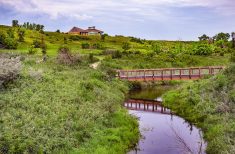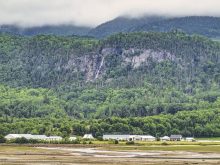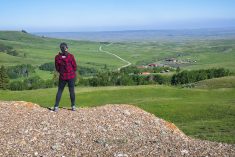If you enjoy prairie wildflowers, this is the summer to visit the Cypress Hills. When we went in early June, the flowers were some of the best we’ve seen this early in the season, thanks to ample spring moisture. While conditions can change, this may be a banner year.
Cypress Hills stands out for wildflowers because its varied habitats of grasslands, forests and highlands bring a diversity of plants.
Mountain shooting stars, pinkish-purple sticky geraniums, wild bergamot, larkspur and lupins are only a few we might find. There is no better place on the Prairies for wild orchids, with at least 18 species, including showy calypso orchids.
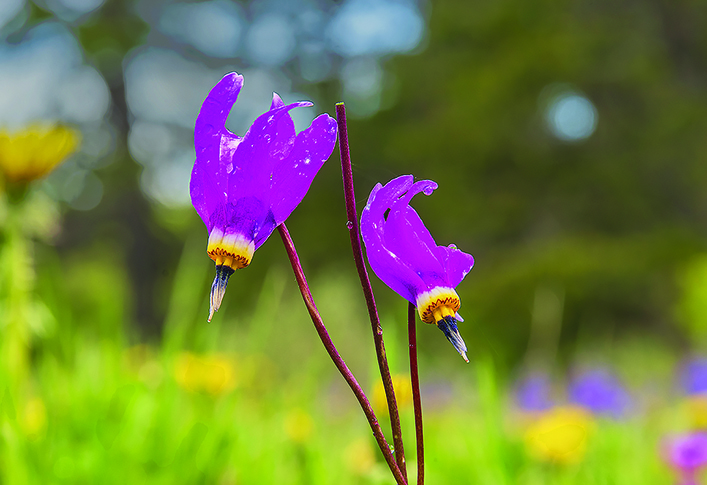
Cypress Hills Interprovincial Park straddles the Saskatchewan/Alberta border. The Alberta section and Centre Block on the Saskatchewan side are the most developed for accommodation, large campgrounds, restaurants, nature trails and other amenities.
Read Also

VIDEO: Bittersweet harvest for this family farmhand
Bruce Burnett helps his brother harvest wheat and canola for the last time on the family farm in Manitoba where they both grew up.
Between the two is the West Block in Saskatchewan, next to the Alberta border, where the only services are basic but nicely situated campgrounds next to Battle Creek.
This is our favourite part of the park, with dynamite scenery such as the drive along Battle Creek and the viewpoint at the Conglomerate Cliffs.
The most visited part of the West Block is Fort Walsh National Historic Site, an important early mounted police post and site of the 1873 Cypress Hills Massacre when a group of American wolf hunters killed several Lakota who they accused of stealing horses.
This was the final straw in increasing lawlessness that led to the formation of the North West Mounted Police.
Most people drive between the Centre and West Blocks along paved highways that go by way of Maple Creek. The more adventuresome take the shortcut on the Gap Road across pastureland. The road can be rough and is often impassable after a rain. But the sweeping views and wildflowers more than make up for the bumpy ride.
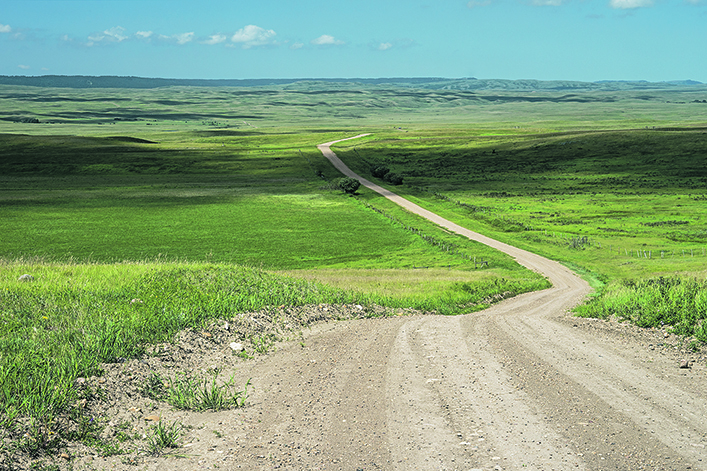
The Cypress Hills extend to the Eastend area. From the Centre Block, head south on Highway 21 for about 12 kilometres; then turn east on Davis Creek Road. It winds east then south, eventually reaching the hamlet of Ravenscrag on the Frenchman River.
Eastend is 22 km farther east along one of the top scenic drives in Saskatchewan. The road follows the river valley lined by rugged slopes with bands of white mud (kaolized sandstone) for which the area is famous.
The T. Rex Discovery Centre, home to “Scotty”, the world’s largest Tyrannosaurus rex, as well as other dinosaurs and prehistoric creatures, is Eastend’s flagship attraction.
Also check out the Eastend Historical Museum. One noteworthy display tells the story of Harold Saunders “Corky” Jones, a local amateur palaeontologist who made many important fossil finds in the area.
Several scenic drives start in Eastend. The road to Ravenscrag can be combined into a loop trip with the Middle Bench Road, which also runs between the two communities but higher into the hills just north of the Frenchman River. A highlight is the magnificent valley view from Jones Peak, named for Corky Jones.
Grid Road 614 runs north from Eastend to the Trans-Canada Highway. Sometimes referred to as the Brady Coulee Road, about a 25-km stretch winds through a beautiful valley following Conglomerate Creek.
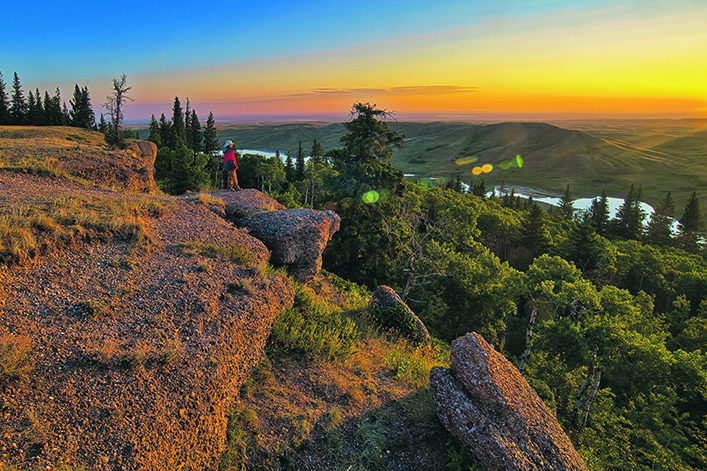
We pass the continental divide, a height of land dividing waters flowing north and east toward Hudson Bay and those flowing south towards the Gulf of Mexico.
Another scenic route heads north on Chimney Coulee Road. Now a basic historic site, over the years Chimney Coulee served as everything from a Hudson’s Bay Company post to a Metis settlement, a Mounted Police post and a ranch.
Travel a bit farther northeast to Pine Cree Regional Park, a hidden gem not well known outside the local area. Here we find the headwaters of Swift Current Creek in a deep wooded valley lined with huge spruce trees looking as if they belong in the northern boreal forest.
We always enjoy camping here on our travels in southern Saskatchewan. Unlike a lot of parks where they have modernized things to the point of resembling urban enclaves, here they purposely keep things simple.
There is no electricity, running water or shops. It’s all about enjoying nature, with a beautiful quiet setting and the Top of the World hike with great views and wildflowers galore. Grab a wildflower brochure at the entry gate and see how many you can find in the park.
Arlene and Robin Karpan are well-travelled writers based in Saskatoon. Contact: travel@producer.com.






